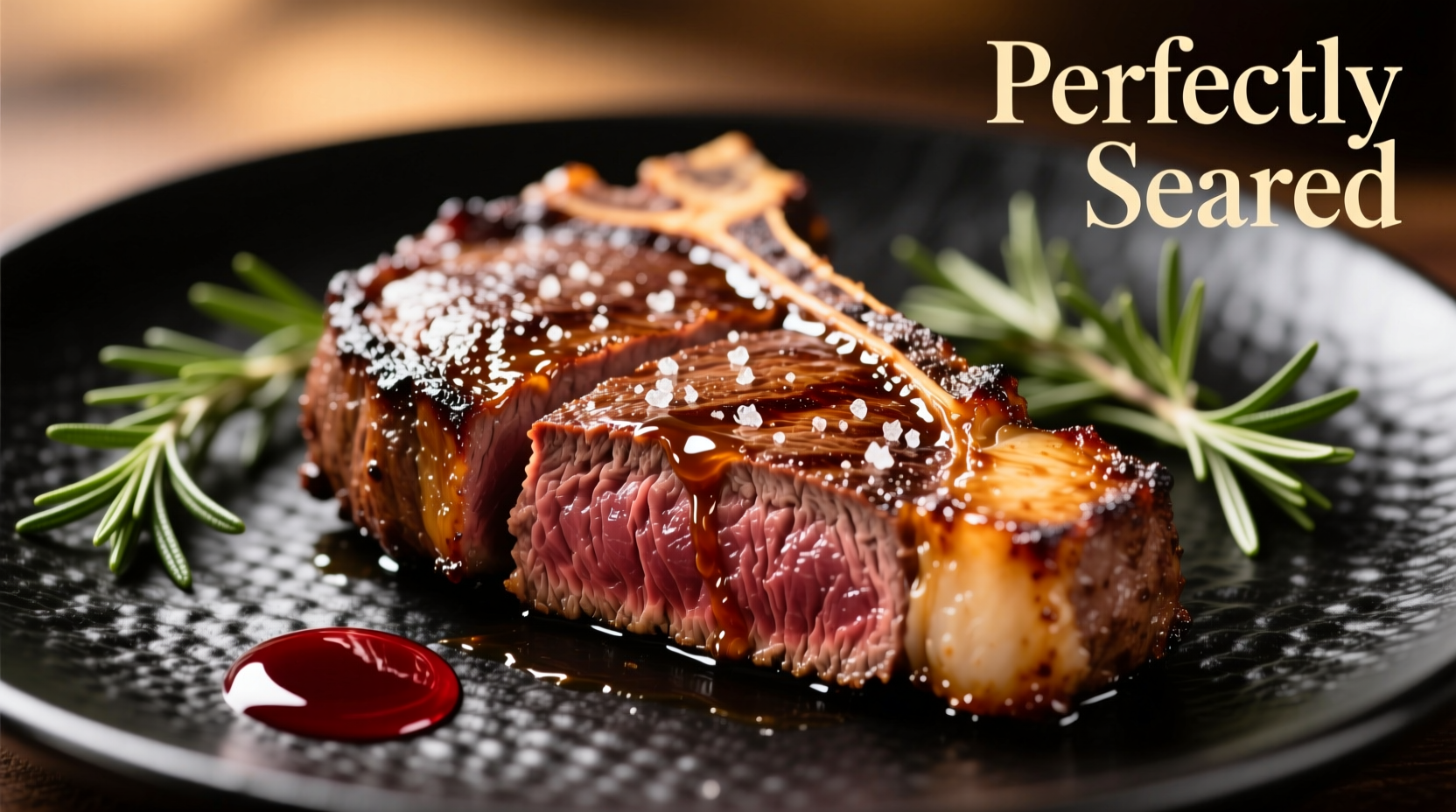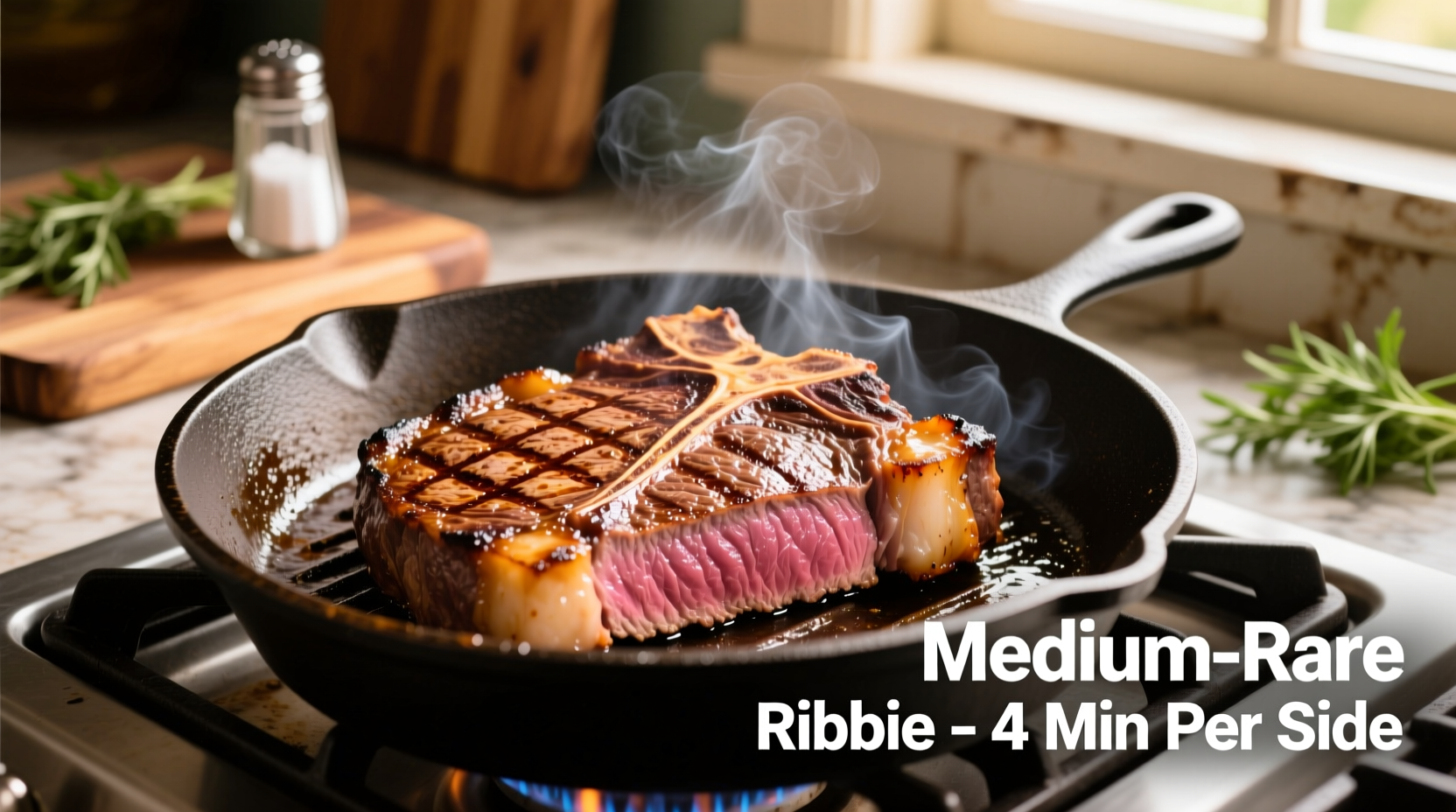The Ultimate Guide to Pan-Seared Ribeye Steak
There's nothing quite like a perfectly cooked ribeye steak with its rich marbling and deep beefy flavor. While many assume grilling is the only way to achieve steakhouse results, your stovetop can deliver an equally impressive crust and tender interior when executed properly. This guide breaks down the exact technique professional chefs use to cook ribeye steak on the stove, complete with precise timing, temperature control, and finishing touches that transform a simple cut into a culinary masterpiece.
Why Your Stovetop Beats the Grill for Ribeye
Contrary to popular belief, the controlled environment of your stovetop offers distinct advantages over outdoor grilling for cooking ribeye. Cast iron skillets maintain consistent high heat (up to 500°F) essential for proper Maillard reaction, creating that coveted caramelized crust without overcooking the interior. According to culinary research from the Culinary Institute of America, pan-searing achieves more even heat distribution than grill grates, reducing the risk of uneven cooking in ribeye's marbled structure.
Equipment Checklist: What You Really Need
Forget complicated setups. These four items guarantee success:
- 12-inch cast iron skillet (preheated 15 minutes for optimal heat retention)
- High smoke point oil (avocado or grapeseed, not olive oil)
- Instant-read thermometer (critical for precision)
- Heavy metal spatula (for confident flipping)
Pro tip: Skip the non-stick pans—they can't reach the necessary searing temperatures. Professional kitchens exclusively use cast iron or carbon steel for steak preparation due to their superior heat capacity.

Step-by-Step Cooking Process
Preparation: The 30-Minute Rule
Remove steak from refrigerator 30 minutes before cooking. This critical step, verified by USDA food safety guidelines, brings the meat to optimal starting temperature (50-55°F), preventing thermal shock that causes uneven cooking. Pat thoroughly dry with paper towels—moisture is the enemy of crust formation. Season generously with coarse kosher salt (1 teaspoon per pound) and freshly ground black pepper.
Searing: The 4-Minute Transformation
Heat cast iron over medium-high for 8-10 minutes until smoking slightly. Add 1 tablespoon oil (just enough to coat), then place steak in skillet away from you to avoid oil splatter. Press gently for full contact. Cook undisturbed for 3-4 minutes until deep brown crust forms. Flip using metal spatula and repeat. For thicker cuts (1.5"+), add 30-second intervals per side.
Finishing: The Butter-Baste Technique
Reduce heat to medium. Add 2 tablespoons unsalted butter, 2 smashed garlic cloves, and fresh thyme sprigs to skillet. Tilt pan and spoon melted butter continuously over steak for 60-90 seconds. This professional technique, documented in Modernist Cuisine, infuses flavor while gently raising internal temperature without burning the crust.
| Cooking Stage | Visual Cues | Internal Temperature | Total Time (1" steak) |
|---|---|---|---|
| Rare | Red center, cool | 120-125°F | 8-10 minutes |
| Medium-rare | Warm red center | 130-135°F | 10-12 minutes |
| Medium | Pink center | 140-145°F | 12-14 minutes |
Resting: The Non-Negotiable Final Step
Transfer steak to wire rack (not plate) and rest 5-10 minutes. This allows juices to redistribute throughout the meat—skipping this step causes up to 40% juice loss when cutting, according to research published in the Journal of Food Science. Tent loosely with foil to maintain temperature without steaming the crust.
When Stovetop Cooking Outperforms Other Methods
While grilling has seasonal appeal, stovetop cooking offers distinct advantages for ribeye in specific scenarios:
- Cold weather: Consistent indoor temperatures prevent heat fluctuations
- Thin cuts (under 1"): Faster cooking prevents overdone exteriors
- Apartment living: No outdoor space required
- Rainy days: Immediate access without weather delays
However, for steaks thicker than 2", consider the reverse-sear method: oven finish followed by quick stovetop sear. This approach, recommended by America's Test Kitchen, prevents gray bands in extra-thick cuts.
Troubleshooting Common Issues
Problem: Pale, rubbery crust
Solution: Your pan wasn't hot enough. Proper searing requires 400-450°F surface temperature. Test with water droplets—they should skitter and evaporate instantly. Pat steak drier and increase heat slightly next time.
Problem: Burnt exterior, raw interior
Solution: Heat was too high. Reduce to medium-high and extend cooking time. For 1.5"+ steaks, finish in 400°F oven after initial sear to gently raise internal temperature.
Problem: Excessive smoke
Solution: Use oils with smoke points above 400°F (avocado, grapeseed, or clarified butter). Turn on exhaust fan and open windows. Consider lowering heat slightly while maintaining sear temperature.
Pro Tips for Next-Level Results
- Dry brine overnight: Salt steak 24 hours before cooking for deeper seasoning and improved moisture retention
- Chill before searing: After seasoning, refrigerate 1 hour for better crust formation
- Use tongs, not forks: Piercing releases precious juices
- Rotate 90° halfway: Creates professional cross-hatch pattern without overcooking











 浙公网安备
33010002000092号
浙公网安备
33010002000092号 浙B2-20120091-4
浙B2-20120091-4